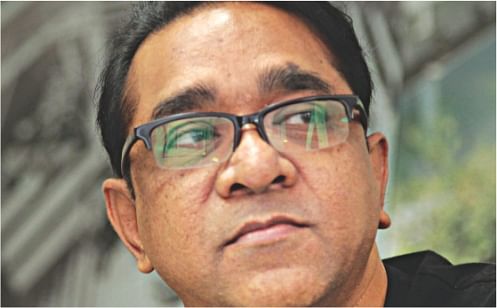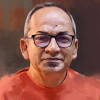HOUSE WITH SOUL
In a city of concrete mess, life is not what one wants it to be. Dream, love and passion for life get buried deeply somewhere in the ways of nonstop urbanisation and thoughtless building designing. Zest for life fizzles out just the way greens and waters disappear from this once beautiful city. So, you live a life in Dhaka without loving it.
Toiling inside a suffocating house of a highly congested city, nostalgia helps you find your true self. Your tormented soul thinks of nothing but of unfulfilled dreams and desperately looks to your infrequent retreat from this maddening city to nature, away in your village home or in some quiet tourist destinations.
Those lucky get to reconnect their souls with nature. They soak into the abundance of nature, fill lungs with fresh air, see butterflies dance from flower to flower, feel the dew under their bare feet and swim in the water as much as they could. It's sort of recharging the soul in desperation before coming back to 10/12 feet, sometimes even less, dungeon in Dhaka. That's the way of life for most of us.
But how would you react if you get to live through part of your nostalgia at your home in the city?
Braving usual tailbacks and messy construction work along the way to a three-storey single family residence (on 21,970sft land) in Gulshan, you step inside the house and the exhaustion will stay back.
You will startle for sure finding a pristine pond by the dining room at the ground floor. A dingi (wooden boat) is moored at the ghat and gentle breeze is pleasantly disturbing, from time to time, the reflection of blue sky on the liquid courtyard. Sunlight as well as rain enters through a huge partially glassed circular opening at the roof. Air blows in and out of the house so freely that play of light and shadow goes on all the time. Just imagine what it would be like to relax alongside the pond under moonlight!
Calm spaces and, literally, the nature all around are certain to relax the mind and magnify the sense of contrast between inside and outside, between calmness and chaos -- an experience that helps the body reconnect the soul.
Living in a typical apartment or house in Dhaka, one seems to forget Bangladesh is a land of six seasons. But if you go to an apartment by the Gulshan Lake you may relive your nostalgia for different seasons. Built on 5,400sft land area, the six-storied apartment building is known as Six Season House for nine families. The dream for a house like that may appear outrageously ambitious and horribly expensive. But it became a reality at not so excessive cost after construction in 2003.
The architectural wonder has truly made all apartments wide open to the Mother Nature. A sliding glass roof turns it into a place under the sun. There is also a room for the rain that was created by unplastered brickwalls and a terracotta floor with the vacant space gazing into the open sky. A transformed green courtyard in the middle and a lake-facing glass stairway ensures you miss nothing of the nature, inside and outside.
As soon as season changes, the wind direction shifts, the sun begins tilting, and this building wears a new look, taking its residents through different faces of nature throughout the year.
It's not the rich who can live in a house with soul.
Let's make a trip to Noor Fattah Lane in Old Dhaka, which is mercilessly being transformed into a ramshackle ghetto with surging population and lack of appropriate construction policy. Existing plots are cut into increasingly smaller units to accommodate more and more nuclear families and to increase revenue for the landlords. And, one cannot walk on the streets here without bumping into each other. None cares about the basic requirements for healthy living -- space for greenery, daylight and air circulation -- in this historic part of Dhaka.
But Haji Abdur Rahman's apartment, which houses 14 families, sends a refreshing wakeup call to all localities. The five-storey building is built on only 2,800sft, with nearly half of its space left to greenery and openness. It's a two-bedroom flat, with the size of the largest one being only 600sft. Yet, the tenants here miss nothing of the nature -- small courts, slices of garden, sun and air. Peeking through khirkee-framed windows gives them a sense of abundance and sharing. Old towners love to share. So, the building has no boundary walls but introduces a traditional merh, the threshold of the house to the street that is used by the people to sit and socialise.
The building is truly small but abundant, testimony for which comes from its fourth level tenant -- Mrs Hossain. "It's a typical phenomenon. Guests will talk about the house for the first few minutes, and then stay longer to enjoy the special ambience. Close relatives often want to sleep over. It's a sweet problem," she complains with lots of happiness.
Residents are visibly very proud of their building, and show deep gratitude to Rafiq Azam, the architect of the house with soul.
Barely 50-year-old, Rafiq is already an icon in the world of architecture for his endeavour for green living. The international architect community sees him as one of 10 architects who will dominate the world in future with his work, which is influenced to a great extent by the wisdom of three famous Bangalees -- Lalon Shah, Rabindranath Tagore and Jagadish Chandra Bose.
Azam has already bagged almost all the awards the world offers for an architect with gurus of architecture struggling for words in praising his phenomenal work. The trendsetter meanwhile considers himself an architect by chance and a painter by conviction.
***
Monograph RELEASED

The first ever monograph on contemporary architectural practices in Bangladesh, dedicated to visionary architect Rafiq Azam, came out on Monday.
A compilation of some extraordinary projects with more than 200 colour and black and white plates, exquisite design sketches, watercolour paintings and inspirational phrases, the monograph provides a rich reference for clients, students, designers and practitioners alike. The world famous Italian company Skira along with Bangladesh's Bengal Foundation has taken the initiative. The watercolour paintings used in the monograph are the work of the painter in Rafiq.
The book will be formally launched in the UK, the US, Australia, Singapore, Malaysia, China, Japan, India, Pakistan and Sri Lanka between January and August next year.
It is already available on the global market, including on Amazon.com at $95. In Bangladesh, the book can be bought at Bengal Foundation at Tk 5,000 from January next year.
Rafiq has recently received the LEAF 2012 Residential Building of the Year Award at the London Design Festival. He also bagged five World Architectural Community awards, South Asian Architect of the Year Award 2012, Cityscape Architecture Award 2009, four South Asian Architecture Commendation awards, commendation in AR Emerging Architecture Award 2007, Institute of Architects Bangladesh Design Award and many other international awards. He has taken the architecture of Bangladesh to a global platform.
***

SOME OF HIS WORKS
1. CRP Physiotherapy Centre,
2. Drik Picture Library and
Gallery, Dhanmondi, Dhaka
3. SA Residence, Gulshan, Dhaka
4. SA Family Graveyard, Botkhil,
Noakhali
5. Gulfeshan Apartments,
Gulshan, Dhaka
6. Vacation House, Mauchak,
Gazipur
7. Bhuiyan Bari, Khilkhet, Dhaka
8. South Water Garden,
Baridhara, Dhaka
9. SP Setia Headquarters, Setia
Alam, Malaysia
10. Bangladesh Chancery
Complex, Islamabad, Pakistan
(Work to begin soon)


 For all latest news, follow The Daily Star's Google News channel.
For all latest news, follow The Daily Star's Google News channel. 



Comments